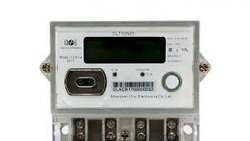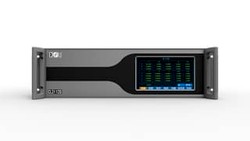The interval for real-time data in smart grids and for smart meters varies depending on the specific application. For example, data that is used for load forecasting may need to be updated more frequently than data that is used for billing purposes. However, in general, smart meters are capable of collecting and transmitting data at intervals of 15 minutes or shorter.
In many countries, the collection of consumption data once per day is sufficient for utilities to achieve their goals. The data collected over a 24-hour period provides a good overview of energy consumption patterns, and can help utilities identify peak usage periods and adjust energy supply accordingly. The data are collected either in sum or split into 96 fifteen minutes record-sets together with the time-stamps.
In the case of Germany, the country has established the technical specifications for smart metering systems in the "Metering Point Operation Act" (Messstellenbetriebsgesetz – MsbG). These regulations define the technical requirements for smart meter gateways, including the data transmission interval. According to the MsbG, the German smart meter gateway must transmit consumption data to the utility company at least once a day. However, the exact time interval may vary depending on the specific requirements of each utility company and the type of tariff the customer has chosen.

Why are Utilities not using shorter Intervals for Transmission?
Shorter intervals of data collection from smart meters are preferable, but can have implications for bandwidth and server capacity for utilities or energy providers.
Bandwidth
Collecting data from smart meters more frequently, such as every 15 minutes or shorter, results in higher data transmission rates and increased bandwidth requirements. This means that more data needs to be transmitted over the communication network, which may require higher bandwidth capacity to handle the increased data volume. Most telecommunication service providers don't have the capacity to offer such services by now.
Server capacity:
Shorter intervals of data collection also require larger server capacities to process the increased data load. Servers need to be equipped to receive, store, process, and analyse the data in real-time or near real-time, depending on the data collection interval.
Higher bandwidth and server capacity requirements can result in increased costs for utilities or energy providers, as they may need to invest in upgraded communication networks, data storage infrastructure, and processing capabilities.
How can real-time data from smart meters be used?
- Load forecasting:
This is the process of predicting future electricity demand. By collecting real-time data from smart meters, utilities can better forecast demand and make more efficient use of their resources. - Fault detection:
Smart meters can be used to detect faults on the power grid. This can help to improve reliability and reduce outages. - Demand response:
This is a program that encourages consumers to reduce their electricity consumption during peak demand periods. By collecting real-time data from smart meters, utilities can target demand response programs to specific areas and times. - Distribution automation:
Utilities can use real-time data to remotely control devices on the distribution grid, such as transformers and switches. This allows them to quickly and efficiently respond to problems, such as outages and overloads. - Smart pricing:
Utilities can use real-time data to set prices that reflect the actual cost of energy. This can encourage customers to use energy more efficiently and save money.
The use of real-time data in smart grids and smart meters is a key enabler of the smart grid. By collecting and transmitting data at a much higher frequency, utilities are able to better monitor and control the grid, which leads to improved efficiency and reliability.
Data analysts play a crucial role in the operation of smart grids, which use advanced sensing, measurement, and control technologies to optimize the production, distribution, and consumption of energy. The job of data analysts is to analyse the large volumes of data generated by smart meters and other grid sensors, and to extract meaningful insights that can help utilities optimize their operations and improve energy efficiency.
Some of the key tasks that data analysts must perform in smart grids include:
- Data processing
Data analysts must process large volumes of raw data from smart meters and other sensors, and transform it into a format that can be easily analysed. - Data analysis
Once the data is processed, data analysts use statistical and machine learning techniques to identify patterns and anomalies in the data, and to extract meaningful insights. - Predictive modelling
Data analysts develop predictive models that can forecast energy demand and supply, and optimize energy production and distribution. - Visualization and reporting
Data analysts use data visualization tools to create reports and dashboards that communicate insights and trends to stakeholders, such as utility managers, regulators, and consumers.
Takeaway
It's important for utilities and energy providers to carefully plan and manage their bandwidth and server capacity requirements when considering shorter intervals for data collection from smart meters, taking into account factors such as data storage, processing capabilities, and cost considerations. The specific impact on bandwidth and server capacity will depend on the frequency of data collection, the volume of data, and the infrastructure and resources available for data management and analysis.
Our cutting-edge smart meters and system solutions are designed to take your energy monitoring and management to the next level. With our advanced technology, you can now configure your intervals to be shorter than 15 minutes, giving you even more accurate and up-to-date insights into your energy consumption. Our state-of-the-art software solution for data acquisition is powered by the world-renowned Alibaba cloud, known to handle millions of transactions per second.
We understand that telecommunication networks can sometimes pose technical bottlenecks, which is why we're committed to working closely with you to ensure your data acquisition is as close to real-time as possible.
Don't settle for outdated energy monitoring systems. Contact us today to learn more about our innovative smart meters and system solutions, and take the first step towards a more sustainable and efficient energy future.
Editor's note: This article was originally published in May 2023 and has been updated for comprehensiveness.





All comments are moderated before being published. Inappropriate or off-topic comments may not be approved.